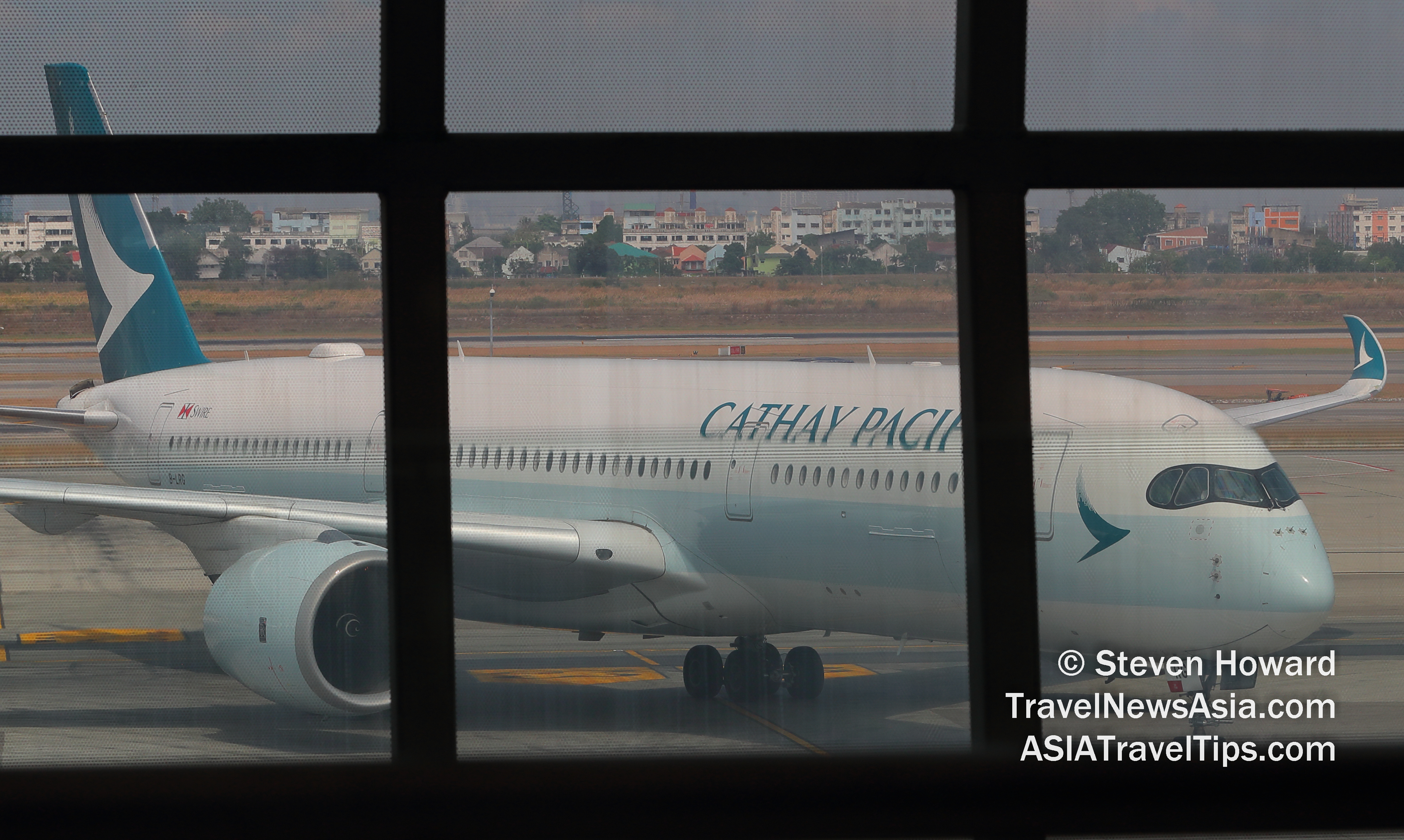|
Cathay Pacific and Cathay Dragon carried a
combined total of 18,473 passengers last month, a decrease of
99.4% when compared to May 2019.
The month�s revenue passenger kilometres (RPKs)
fell 99.1% year-on-year, the passenger load factor plummeted by
53.3 percentage points to 29.6%, and capacity, measured in
available seat kilometres (ASKs), decreased by 97.5%.
In the first five months of 2020, the number
of passengers carried dropped by 71.2% against a 59.5% decrease in
capacity and a 67% decrease in RPKs, as compared to the same
period for 2019.
Given the already significant drop in passengers
carried and RPKs over the first five months of this year, the
Cathay Pacific Group continues to anticipate a substantial loss in
the first half of 2020.

Last week,
Cathay Pacific
unveiled details of a
HK$39 billion recapitalisation plan designed to provide the
company with the necessary funds to survive the current downturn
and to continue to contribute to the success of Hong Kong as an
international aviation hub amid unprecedented challenges to the
global travel market.
Cathay Pacific Group Chief Customer and Commercial
Officer Ronald Lam said, �The impact the global COVID19 pandemic
is having on the Cathay Pacific Group, and the wider aviation
industry as a whole, is phenomenal. Though there have been some
small positive signs, such as the ban on transit traffic through
Hong Kong International Airport (HKIA) beginning to ease, the
future remains very uncertain. Unlike many of our global airline
peers, we have no domestic network and so are entirely dependent
upon cross-border travel. The extension of restrictions on foreign
arrivals into Hong Kong has emphasised the need to maintain a
cautious and agile approach to resuming passenger services. We have therefore revised our expected operating
passenger capacity for June and July. Overall, we plan to operate
approximately 3.5% capacity in June and 9.4% in July. These plans
remain contingent on the further relaxation of travel restrictions
around the world and are subject to change. We will continue to
monitor demand and adapt our passenger schedule accordingly,
though we expect we will be operating a substantially reduced
schedule over the coming months.�
Cathay Pacific Passenger
Numbers in May 2020
�Demand remained very weak in May. We carried less
than 1% of the number of passengers we carried in the same month
last year. Passenger volume averaged some 600 passengers per day
while load factor, although higher than the 21.7% seen in April,
was still low at 29.6%,� said Mr Lam. �We continued to operate only a skeleton passenger
schedule throughout May serving just 14 destinations, mostly
regional. With the ban on transit traffic through HKIA still in
place in May, much of our very limited passenger traffic came from
inbound Hong Kong travel, in particular from North America and
Australia, which recorded load factors of up to 75% and 68%,
respectively.�
Cathay Pacific Cargo
Cathay Pacific and Cathay Dragon carried a
combined total of 98,710 tonnes of cargo
and mail last month, a decrease of 41.3% when compared to May 2019.
The
month�s revenue freight tonne kilometres (RFTKs) fell 29.1%
year-on-year. The cargo and mail load factor increased by 9.1
percentage points to 73%, while capacity, measured in available
freight tonne kilometres (AFTKs), was down by 37.9%.
In the first
five months of 2020, the tonnage fell by 29.7% against a 27.9%
drop in capacity and a 22.3% decrease in RFTKs, as compared to the
same period for 2019.
�Cargo performance remained strong and we carried
approximately 17% more tonnage in May compared to April, though
this still represented a significant year-on-year drop from the
same month in 2019. Driven by strong demand for urgent shipments
against a backdrop of reduced market capacity, load factor further
improved to 73%, while cargo yields increased significantly,� Mr
Lam said. �To ensure time-sensitive cargo, such as medical
supplies, was shipped to where it was needed most, we continued to
take steps to maximise our available cargo-carrying capacity. We
improved the utilisation of our freighter aircraft, which have
been flying around the clock, and chartered more flights from our
all-cargo subsidiary, Air Hong Kong, to serve regional demand. Additionally, we mounted close to 900 pairs of
cargo-only passenger flights in May, primarily serving long-haul
destinations in North America, Europe and Australia. We have also
been optimising much-need airfreight capacity by loading select
cargo in the passenger cabins of our Boeing 777-300ER aircraft
where possible. The latter half of May saw demand for medical
supplies soften, while traditional industrial and consumer
products began to show signs of picking up. Exports from Southeast
Asia and the Indian sub-continent also improved as local lockdown
measures eased. We continue to adjust our capacity in accordance
with demand. Moving forward, we expect our freighters will operate
at near full capacity, while our cargo-only passenger flights may
be reduced.�
See also:
Cathay Pacific
unveilsdetails of a
HK$39 billion recapitalisation plan.
See latest
Travel News,
Video
Interviews,
Podcasts
and other
news regarding:
COVID19,
Cathay Pacific,
RPK,
ASK,
FTK,
HKIA.
|
Headlines: |
|
|
